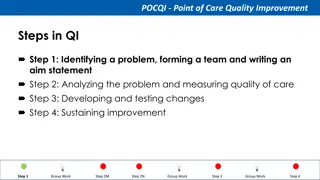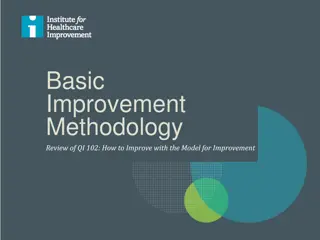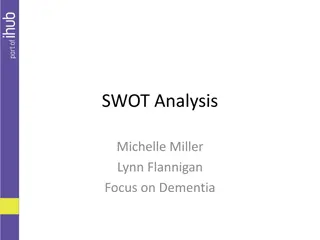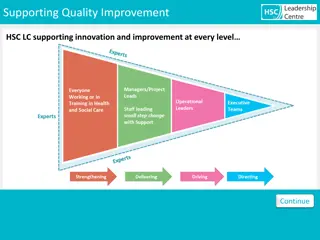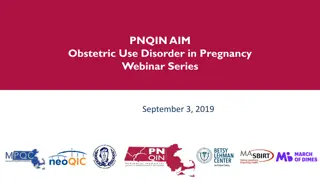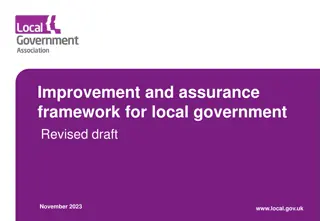
Striving for Education Improvement: 2017-18 Overview
Explore the initiatives for education improvement in the 2017-18 academic year, including DI indicators, goals, progress targets, and more. Join the discussion on enhancing educational outcomes.
Download Presentation

Please find below an Image/Link to download the presentation.
The content on the website is provided AS IS for your information and personal use only. It may not be sold, licensed, or shared on other websites without obtaining consent from the author. If you encounter any issues during the download, it is possible that the publisher has removed the file from their server.
You are allowed to download the files provided on this website for personal or commercial use, subject to the condition that they are used lawfully. All files are the property of their respective owners.
The content on the website is provided AS IS for your information and personal use only. It may not be sold, licensed, or shared on other websites without obtaining consent from the author.
E N D
Presentation Transcript
Demonstrable Improvement for 2017-18 Presented by Ira Schwartz & Shibu Joseph December 13, 2017
Purpose of the Webinar Provide an overview of the current system. Review the process the New York State Education Department (NYSED) will follow to determine Demonstrable Improvement (DI) for 2017-18. Review a proposal for how to use ESSA designations as part of the DI process. Provide examples of how the proposal would work. Request feedback on the revised weighting proposal and any alternative ideas. Discuss the assignment of new Level 1 indicators and the ability to request revisions to the indicators for a school. Review changes to VADIR School Safety Indicator and request feedback. Identify next steps & address questions. 3
Questions Please e-mail questions on Demonstrable Improvement to accountinfo@nysed.gov. 4
DI Indicators, Goals & Progress Targets Most indicators are based on student performance; some indicators are based on implementation of programs and/or processes. Districts were allowed to submit local measures as DI Indicators. Level 1 DI indicators were selected by the Department, if the school s baseline performance was below the 2015-16 goals and needed the most improvement. Level 2 indicators were selected by the district in performance or program areas where the school s baseline performance was below the 2015-16 goals. 5
DI Indicator Goals & Progress Targets The yearly goal is to reduce the gap between Receivership Schools and the state average by 1/6, and by for the 2015-16, 2016-17 and 2017-18 school years. The yearly progress target is set based on a minimum change from the school s baseline performance. The progress targets in general increase from one percent in 2015-16 to six percent in 2017-18. For each indicator, a school can make progress by achieving either the goal or the school specific progress target. 6
DI Indicator Goals & Progress Targets: Examples Indicator 2015-16 Goal 2015-16 Progress Target 2016-17 Goal 2016-17 Progress Target 2017-18 Goal 2017-18 Progress Target School s Baseline Grades 3-8 ELA All Students Level 2 & above 26% 40% 27% 42% 29% 51% 32% Grades 3-8 Math Black Students MGP 41.79 48.96 42.79 48.96 42.79 48.96 43.79 Total Cohort Passing ELA Regents 18% 51% 19% 53% 21% 61% 24% 4-Year Grad Rate - All Students 26% 55% 27% 57% 29% 64% 32% 7
The Level 1 Indicators Elementary and Middle: High School: Making Priority School Progress Percent of Students at or above Level 2 in ELA Percent of Students at or above Level 2 in math Mean Student Growth Percentile in ELA Mean Student Growth Percentile in math Percent of Students at or Above Level 3 in Science Serious Incidents (VADIR) Making Priority School Progress 4-year High School Graduation Rate 5-year High School Graduation Rate Percent of Students Graduating with Regents Diploma with Advanced Designation Percent of 10th graders passing Math Regents Percent of 11th graders passing ELA Regents Serious Incidents (VADIR) 8
Level 2 Indicators Level 2 Indicators Include: Indicators for students subgroups (i.e., English language learners, low-income students, racial/ethnic groups and students with disabilities). Implementing a Community School Model, expanded learning time and other key system initiatives. School climate (i.e., attendance, suspensions). Gaps between a student group and students who are not members of the group (e.g., between students with disabilities and students without disabilities). Students passing courses. High School Student Promotion Rates (promoted from grades 9,10 & 11). College- and Career- Readiness. Developmentally Appropriate Child Assessments: Pre-K to Third Grades. Teachers Teaching out of Certification Area. Teacher Turnover. Post-graduation plans for students. Local measures approved by the Commissioner. 9
Computation of a DI Index Level 1 indicators are weighted at 50% in computing the Demonstrable Improvement Index and Level 2 indicators are also weighted at 50%. Each indicator within Level 1 and Level 2 are weighted equally. The Demonstrable Improvement Index shall range from 0% to 100%. If the school achieves an index of 67% or higher, the school is preliminarily determined to have made Demonstrable Improvement. If the school achieves below 40%, the school is preliminarily determined to have not made Demonstrable Improvement. This designation can be revised if the school can demonstrate it would have achieved 67% of its goals absent extenuating or extraordinary circumstances. The Commissioner reviews the entirety of the record to determine whether a school with an index of 40% or higher and less than 67% shall be preliminarily determined to have made Demonstrable Improvement. Final determinations are made after the Commissioner has consulted with the receiver, the principal, the head of the local collective bargaining unit representing teachers, and the chair of the Community Engagement team. 10
Computing the Demonstrable Improvement Index: Example Indicator Level Performance Progress Target Indicator Made Weighting Priority School makes yearly progress Level 1 Made Progress Make Progress Yes 7.14% 3-8 ELA All Students MGP Level 1 54.90 40.32 Yes 7.14% 3-8 Math All Students MGP Level 1 47.68 34.99 Yes 7.14% 3-8 Math All Students Level 2 and above 3-8 ELA All Students Level 2 & above Level 1 46% 37% Yes 7.14% Level 1 45% 29% Yes 7.14% NWEA Reading Growth NWEA Math Growth Teacher Practices and Decisions (DTSDE Tenet 4) Level 1 Level 1 40.4% 44.4% 53.7% 49.8% No No 0% 0% Level 2 Stage 2 Stage 2 Yes 10 3-8 Math Black Students Level 2 and above Level 2 38% 34% Yes 10 Teacher Attendance Level 2 100% 96% Yes 10 Chronic Absenteeism 3-8 Math ED Students Level 2 and above Index Result Level 2 Met Rubric Meet Rubric Yes 10 Level 2 48% 36% Yes 10 86% 11
DI Status for 2016-17 Data for DI indicators were collected during May to August 2017. Early September 2017: NYSED informed districts whether the indicators met the progress target or goal, and also the preliminary DI Index score. The data behind the calculations was also shared. Mid September 2017: Districts appealed the indicator data or the DI Index score by September 15, 2017. Early October 2017: NYSED informed districts about the preliminary DI status based on 2015-16 and 2016-17 DI Index. Early October 2017: NYSED then informed stakeholders about the preliminary DI status. Stakeholders were asked to submit a Demonstrable Improvement Determination Consultation and Collaboration Form by October 13, 2017. Late October 2017: Stakeholders and the public were informed of the final DI status. Schools failing to make DI were required to appoint an Independent Receiver with the approval of the Commissioner or submit a closure plan. 12
Proposal for Modifying Demonstrable Improvement Determination Process for 2017-18 1. All current DI indicators, except Indicator #1: Make Priority School Progress, will remain in place. 2. Any Level 1 indicator for which a school falls below the 2017- 18 goal will be newly assigned to the school. 3. The weighting of indicators will be modified as follows: a. A school will receive 50 points if the school is identified as a School In Good Standing under ESSA. b. A school will receive 25 points if the school is identified as a Targeted Support and Improvement School (TSI) under ESSA. c. A school will receive 0 points if it is identified as a Comprehensive Support and Improvement (CSI) School. 4. Level 1 Indicators will be weighted 25%. 5. Level 2 Indicators will be weighted 25%. 13
Comparison of Weights: 2016-17 to 2017-18 Proposed System Current System 25% 50% Level 1 25% 50% Level 2 - 50% ESSA Status Accountability Status Weight Good Standing 50 Targeted Support & Improvement (TSI) Comprehensive Support & Improvement (CSI) 25 0 14
Examples of Proposed DI Determination Process Example #1 Number of Indicators Category Number Met Points 4 3 .75 X .25 = 19 Level 1 8 4 .5 X .25 = 13 Level 2 Good Standing 50 ESSA Status Made DI 82 DI Status 15
Examples of Proposed DI Determination Process Example #2 Number of Indicators Category Number Met Points 4 4 1 X .25 = 25 Level 1 8 6 .75 X .25 = 19 Level 2 Targeted Support and Improvement 25 ESSA Status Preliminary DI Status Made DI 69 16
Examples of Proposed DI Determination Process Example #3 Number of Indicators Category Number Met Points 4 4 1 X .25 = 25 Level 1 8 6 .75 X .25 = 19 Level 2 Comprehensive Support and Improvement 0 ESSA Status Preliminary DI Status 44 Commissioner s Decision 17
Examples of Proposed DI Determination Process Example #4 Number of Indicators Category Number Met Points 4 3 .75 X .25 = 19 Level 1 8 4 .5 X .25 = 13 Level 2 Comprehensive Support and Improvement 0 ESSA Status Preliminary DI Status Did Not Make DI 32 18
Examples of Proposed DI Determination Process Example #5 Number of Indicators Category Number Met Points 4 0 0 X .25 =0 Level 1 8 2 .25 X .25 = 6 Level 2 Good Standing 50 ESSA Status DI Preliminary Status 56 Commissioner s Decision 19
Request for Feedback Do you support the proposal for modifying Demonstrable Improvement determination process for 2017-18? If yes, are the weightings appropriate? If no, what other suggestions should we consider? Please e-mail comments on the proposal for modifying the DI Determination process to accountinfo@nysed.gov no later than Thursday, December 21, 2017. 20
Additional Level 1 Indicators for 2017-18 If the school s 2016-17 performance is below the 2017-18 statewide goal for an indicator, the indicator will be added as an additional Level 1 indicator. NYSED will inform districts of the new Level 1 indicators added and the associated goals and progress targets. 21
Replacement/Removal of Indicators A school may seek to replace or remove an indicator. For an indicator to be replaced, the school must have met the indicator during the 2016-17 school year. If for the 2017-18 school year, the school will not have data for 30 or more students for an indicator, then it may be replaced or removed. Schools may replace DTSDE indicators with another indicator, provided the school met the indicator during the 2016-17 school year. For the new indicator added, the school s 2016-17 performance must be below the 2017-18 goal. Important: Schools must have a minimum of four Level 1 and five Level 2 indicators, in addition to ESSA Status indicator. 22
Changes to VADIR School Safety Indicator #5 Due to changes to Violent and Disruptive Incident Report (VADIR), the incident categories reportable for Indicator #5: School Safety have changed as follows: 2016-17 VADIR School Safety Count Incidents # Category 1 Homicide 2.1 Forcible Sexual Offenses 2.2 Other Sex Offenses 3 Robbery 4 Assault with Serious Physical Injury 5 Arson 6 Kidnapping 7 Assault with Physical Injury 8 Reckless Endangerment Any incident with use of a Weapon, Weapons Possession. 2017-18 VADIR School Safety Count Incidents # Category 1 Homicide 2a Forcible Sex Offenses 2b Other Sex Offenses 3a Assault - Physical Injury 3b Assault - Serious Physical Injury Weapons Possession Only - Routine Security Check 4b Weapons Possession Only - Other Material Incidents of Discrimination, Harassment, and Bullying (Except Cyberbullying) 5b Cyberbullying 4a 5a 17 23
Changes to VADIR School Safety Indicator #5 Even though Robbery, Arson, Kidnapping, and Reckless Endangerment are not reportable to NYSED for VADIR purposes, the district may continue to collect them if it is the district s policy. For some schools, there will be a drop in serious incidents due to the non-reporting of aforementioned incidents. For some schools, there may be an increase in serious incidents due to the inclusion of the new incident categories: Material Incidents of Discrimination, Harassment, and Bullying (Except Cyberbullying), and Cyberbullying. The Department is proposing that for 2017-18 goal and progress target for Indicator #5: School Safety remain unchanged despite the changes to the measure. a. 2017-18 Goal: Less than 5 serious incidents b. 2017-18 Progress Target: 20% reduction in serious incidents from baseline. We are requesting your feedback on maintaining the 2017-18 goal and progress target. 24
Questions Please e-mail questions on Demonstrable Improvement to accountinfo@nysed.gov. 25
Next Steps Based on your feedback, NYSED will send districts the preliminary 2017-18 DI Indicators, and associated goals and progress targets (including new Level 1 indicators, if applicable). Districts may submit replacement/removal requests by Wednesday, January 3, 2018. We will inform districts of the final 2017-18 DI Indicators by Wednesday, January 10, 2018. We will convene districts again next year to discuss process for making 2018-19 DI determinations. 26
2017-18 Preliminary Data and DI Index Appeal In early September 2018, NYSED will inform districts whether the indicators met the 2017-18 progress target or goal and also the preliminary DI Index score. The data used for the calculations will also be shared. Districts may appeal the indicator data or the DI Index score. Appeals must be sent to accountinfo@nysed.gov. 27
Preliminary DI Decision In early October 2018, the Commissioner will review the performance of the school during the 2015-16, 2016-17 and 2017-18 school years to make the preliminary DI status decision. 2017-18 performance will be weighted most heavily. Districts will be informed of the preliminary DI status. Thereafter the stakeholders will also be informed of the status. By mid-October 2018, stakeholders will be required to submit the Demonstrable Improvement Determination Consultation and Collaboration Form, either agreeing or disagreeing with the Commissioner s decision. The stakeholders may provide additional information for the Commissioner s consideration before she makes the final decision. The Commissioner will also consider any extenuating or extraordinary circumstances that happened during the 2015-16, 2016-17 and/or 2017-18 school years before making a final decision. 28
Preliminary DI Decision In late October 2018, NYSED will inform districts, stakeholders, and the public of the final DI status. For schools failing to make DI, the district must appoint an Independent Receiver and submit the appointment for the approval of the Commissioner. Schools that are in Good Standing or are Targeted Support and Improvement Schools will be eligible for removal from Receivership. 29
School Receivership Website: Regulations, Requirements, Grants etc. For Receivership Schools regulations, requirements, grants, resources etc., please visit: http://www.p12.nysed.gov/oisr/Receivership.html 30
School Receivership Website: Demonstrable Improvement For DI related information, please visit: http://www.p12.nysed.gov/accountability/de/SchoolReceivership.html 31
Questions Please e-mail questions on Demonstrable Improvement to accountinfo@nysed.gov. 32




